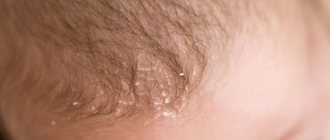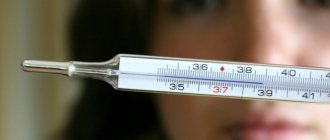Uric acid diathesis is a condition accompanied by an increase in the level of uric acid (more precisely, its salts - urates) in the blood. Normally, its concentration should be 6 mg/dL for women and 6.8 mg/dL for men.
High levels of uric acid lead to the formation of crystals, which settle in the joints and cause gout. If they accumulate in the kidneys, stone disease develops. Research has also linked uric acid kidney disease to cardiovascular disease, type 2 diabetes, high blood pressure and non-alcoholic fatty liver disease.
What is urolithiasis
The kidneys, urethra, bladder, ureter, urethra are parts of the vital human system in which calculi (stones) can accumulate. Urological disease affecting the urinary system is more often diagnosed in older people. Children are less likely to become targets of the disease. In men, the problem of stones in the system that removes urine, according to statistics, is more common than in women. Salts settle in the organs and crystallize, which, in fact, is later called stones. These formations interfere with the normal functioning of the components of the urinary system. Violation of their activity is accompanied by negative symptoms. A person's life becomes incomplete. The course of urolithiasis is ambiguous and depends on:
- parameters, configuration of stones;
- places of localization of crystalline sediment;
- individual anatomical features of a person.
Urolithiasis occurs in acute and chronic forms. Often, stages of exacerbation of the disease and remission periods alternate; relapse occurs when preventive measures are not followed, treatment is incorrect or absent.
Classification of stones
The classification can be based on the shape, location, chemical composition and size of the stones. Stones formed in the urinary system can have the following forms:
- round;
- oblong;
- flat;
- combined (from different configurations);
- coral-shaped.
If the systematization is based on the chemical composition inherent in stones, then the following types can be distinguished:
- protein;
- from inorganic compounds (we are talking about carbonates, phosphates, oxalates);
- magnesium;
- from derivatives of uric acid;
- polymineral.
The size range of stones can range from one millimeter to ten-centimeter “giants”; the weight of some specimens reaches a kilogram or more. Doctors performing operations to extract substances have to deal with stones of various appearances.
| Stone type | Color | Surface |
| Uric acid (urate) | Yellow-brown | Smooth |
| Oxalate | Brown-black | Uneven, with thorns |
| Phosphate | Whitish gray | With pores |
If we consider stones according to their location, then doctors identify substances that have settled in the renal pelvis, in the bladder area, in the ureter, in the kidneys.
Prevalence of the disease
Symptoms of urolithiasis are recorded in forty cases out of a hundred visits to doctors regarding urological problems. The working age of patients - from 20 to 55 years - is the most common time in the life of people who are overtaken by urolithiasis. Children do not encounter the disease as often. Elderly people are more likely to experience a relapse of a previously detected disease. Men are diagnosed with urolithiasis 3 times more often than the fairer sex. The disease is not unique and characteristic of any one country; residents of many countries around the world experience symptoms of the disease.
Is it possible to cure MCD?
Uric acid diathesis is curable. There is one exception - a condition passed on by inheritance. Strict suppression of weaknesses and bad habits, careful attention to your body and the doctor’s recommendations are the key to successfully getting rid of uric acid diathesis.
The main component of treatment remains diet. By abruptly stopping acidification, you can quickly normalize your metabolism.
Another scenario is likely if a person who has discovered alarming symptoms of uric acid diathesis still does not rush to the clinic to see a doctor or does not exactly follow all his instructions.
Unfavorable factors
There are no specific causes of urolithiasis, but there are a number of factors that adversely affect the patient’s health and lead to urolithiasis. There are negative aspects of an external and internal nature. In the first case, it is worth talking about the following points leading to the formation of stones:
- Violation of phosphorus-calcium metabolism (relevant for elderly and sedentary people).
- Poor nutrition and passion for salty, sour, smoked, canned, protein foods (acidification of urine occurs).
- Atypical drinking water (with excess calcium salts) is a trigger for kidney stones.
- Harmful production work.
- Reduced levels of vitamins A and group B.
- Negative effects of drugs with sulfonamides and ascorbic acid.
Potential patients with urolithiasis are characterized by anatomical anomalies:
- kidney prolapse;
- underdevelopment or absence of one kidney;
- insufficiently wide channels in the urinary system.
Previous inflammations or infections of the bladder and other urinary organs can also cause the accumulation of stones.
Urolithiasis can also be caused by internal unfavorable factors associated with the general state of human health:
- long-term infections;
- dehydration;
- poisoning;
- long forced immobilization (after operations, as a result of injuries);
- disruptions in metabolic processes;
- chronic stages of gastrointestinal diseases.
What happens in the body with uraturia
All living things contain chemical substances - purines, which are important elements of the cell nucleus. They are actively involved in metabolism. The natural process is their destruction, during which purine derivatives are formed.
One of them is uric acid. It is a natural antioxidant whose main duty is to protect blood vessels from possible destruction. Due to chronic kidney dysfunction, uric acid is not excreted by them, but is retained in the body. The result is its high concentration, leading to the formation of salts - urates. They begin to accumulate in organs, tendons, and joints. Urolithiasis develops. The next possible stage is gouty arthritis, impaired renal function, and diseases of various organs of the digestive system.
Uric acid is a natural stimulant of the central nervous system; it greatly increases the levels of adrenaline and norepinephrine. A high concentration of both hormones leads to serious consequences - mental illness, nervous exhaustion.
Genesis of formal type
The basis of the stone is its matrix, which has a protein structure. The matrix is formed as a result of metabolic disorders, infection of the body, various inflammatory diseases, and atypical blood circulation in the kidneys. Insoluble compounds (calculi) are deposited in the components of the urinary system, which accumulate and increase over time. The kidneys and other organs that remove urine from the body are in conditions of insufficient blood flow, which reduces their nutrition and leads to malfunctions.
Urolithiasis disease. Symptoms
Any disease is characterized by certain symptoms. Urolithiasis is characterized by:
- pain in the lumbar region;
- colic in the kidneys;
- the presence of blood in the urine (hematuria);
- attacks of nausea and vomiting;
- passing of stones along with urine;
- difficulty urinating.
Among the symptoms of the disease, pain is one of the most significant manifestations. It may constantly plague the patient or appear periodically. The acute nature of the pain is usually associated with the process of stone movement. In time, attacks can last from several minutes to days. Rich foods, large amounts of alcohol, shaking while driving, sudden movements can cause renal colic. Blood impurities in urine are not always detected by eye; additional laboratory tests of urine are required. Urolithiasis may also be accompanied by general symptoms: high fever, malaise and weakness. This is due to concomitant infection of the urinary system organs - the bladder, ureter, urine excretion tract, etc. With the formation of coral stones in the kidneys (nephrolithiasis), some patients also develop a constant feeling of thirst and dry mouth.
Uric acid diathesis: symptoms
This condition is accompanied by clinical manifestations of the central nervous system, kidneys and joints, and in later stages the respiratory and cardiovascular systems are involved in the process.
The earliest symptoms of uric acid diathesis are changes in nervous activity. This feature of the clinic of arthritic diathesis is explained by the fact that urates have an irritating effect on the centers of the nervous system, which leads to excitement and increased activity of the latter.
Neuro-arthritic diathesis is accompanied by constant overexcitation of the central nervous system. Before the age of one year, this is manifested by the constant cry of the baby, who asks to be held by his parents, falls asleep poorly or does not sleep at all in their absence. The positive side of these features of the nervous system is that a child with uric acid diathesis is ahead of his peers in mental development, he masters speech faster and begins to read early, has an excellent memory, is inquisitive and actively interested in everything that happens around him.
The negative side of uric acid diathesis in children is their emotional lability, the manifestations of which often acquire features of neurotic symptoms. The baby sleeps poorly, is anxious, and enuresis and night terrors often accompany diathesis. Children with neuro-arthritic diathesis slowly gain weight, and they have an extremely persistent decrease in appetite.
In addition to the central nervous system, the target organs for uric acid diathesis are the kidneys and joints. A high concentration of uric acid salts in the blood leads to an increase in their excretion by the renal tubules, and this leads to an increase in urate content in the urine (hyperuricosuria) and the formation of crystals. Crystalluria and saluria themselves are not a pathology, however, these symptoms of uric acid diathesis can subsequently cause urolithiasis (urolithiasis).
Uric acid salts affect joints. In childhood, we do not see persistent morphological changes in the joint tissues (as, for example, with gout); diathesis manifests itself only as joint pain, which bothers children at night. Much less often, with neuro-arthritic diathesis, the clinical picture contains signs of damage to the respiratory system with an asthmatic component, the digestive tract (tendency to constipation, colitis) and allergic dermatitis.
Laboratory symptoms of uric acid diathesis include uraturia, a predisposition to acidosis and a periodic increase in the level of acetone and ketone bodies in the blood. Such metabolic disorders (tendency to ketoacidosis) pose a serious danger, because against the background of errors in diet, intense physical or mental stress, they become the cause of acetonemic vomiting in children with uric acid diathesis.
Acetonemic vomiting in arthritic diathesis is highly intense and quickly leads to dehydration and disruption of water-electrolyte balance; in severe clinical cases, it is accompanied by convulsive syndrome and the appearance of meningeal symptoms.
In the treatment of uric acid diathesis, the clinical picture of which includes acetonemic syndrome, heavy drinking and saline solutions are used to correct metabolic disorders, and cleansing enemas and enterosorbents are prescribed to remove ketone bodies. Enterosgel is recognized as the best sorbent, which has a high affinity for toxic elements, but does not interfere with the absorption of nutritional components of food.
Diagnostics
The difficulty in determining urolithiasis is that its manifestations may be similar to other diseases: appendicitis, gallstones, ectopic pregnancy, stomach ulcers, etc. To clarify the diagnosis, contact the Global Clinic Center, where qualified doctors will offer the most modern methods for identifying urolithiasis. Diagnostic methods for determining the formation of stones in the urinary system:
- Consultation with a urologist, during which an experienced specialist will examine the patient and ask many questions to collect a history of the disease.
- Application of ultrasound. An ultrasound is done to visualize stones, check the kidneys, bladder, and urinary tract.
- Survey urography. Helps assess the condition of the kidneys and the location of the stone.
- Blood and urine tests (general and biochemical). Be sure to test your urine for acidity. Laboratory tests reveal the chemical composition of stones.
- Radiography. In 96 out of a hundred patients, a shadow of a stone can be detected on an x-ray.
- Urine culture to determine microflora (the goal is to exclude infections).
Computed tomography is rarely used in cases of suspected urolithiasis, because this type of examination does not give a complete picture of the stones and does not have the best effect on the organs. If it is necessary to differentiate between urolithiasis and ureteral oncology, doctors use an invasive method - diagnostic retrograde endoscopic ureteropyeloscopy. The result of this manipulation is crushing the stones or taking tissue for a biopsy. High diagnostic information can be obtained by conducting nuclear magnetic resonance imaging.
Treatment in sanatorium-resort conditions
Patients with uric acid diathesis are recommended to undergo an appropriate treatment course in a sanatorium, where they will be provided with special comprehensive treatment taking into account individual indications. In addition to a specially organized diet, patients undergo various procedures, including:
- drug treatment;
- mud therapy;
- drinking procedures;
- chemotherapy treatment;
- physiotherapeutic procedures.
Sanatoriums, equipped with all the necessary modern equipment, provide services for clinical and biochemical studies, endoscopy, functional diagnostics and a number of others. Medical staff monitors the patient’s condition, the process of treatment and rehabilitation.
Treatment of urolithiasis
The disease is treated conservatively and surgically. Patients need to understand the complexity associated with urolithiasis: the possibility of relapses and the formation of new stones.
Conservative methods
The complex of conservative therapy includes:
- diet;
- drinking plenty of water;
- the use of herbal infusions that enhance urine output;
- taking medications for stone dissolution (with mandatory consideration of contraindications).
Medicines for dissolving stones are selected by urologists taking into account the chemical composition of the stones. Symptomatic treatment will help patients get rid of pain (painkillers), inflammation (anti-inflammatory drugs), bacteria (antibacterial drugs). Physiotherapy is prescribed only after the end of the acute period of urolithiasis.
Surgical methods
If conservative therapy does not bring a positive result, doctors apply a shock wave to the stones (lithotripsy). This method is especially effective for large stones and complex configurations. The shock wave helps to break up the stones into small parts for their further removal from the body naturally or surgically. If this method of combating urolithiasis is ineffective, then you have to turn to surgeons.
Uric acid diathesis: treatment
For arthritic diathesis, the main focus of therapy is recommendations regarding work, rest and diet. Uric acid diathesis in children requires strict dosing of mental and emotional stress; parents must protect the child from stress; hardening and regular (feasible) physical activity will have a positive effect.
Proper nutrition is even more important for the treatment of uric acid diathesis. The share of animal products in the child’s diet should be reduced. Broths, canned fish and offal are subject to complete elimination. We limit our meat consumption, and dairy products become the main source of animal protein. Also, with neuro-arthritic diathesis, you should avoid chocolate, coffee and cocoa, and it is recommended to reduce your consumption of animal fats. The basis of the diet should be cereals and products of plant origin (except spinach and sorrel).
If arthritic diathesis is diagnosed, it is recommended to give the child enterosorbents to prevent episodes of ketoacidosis, as well as to remove uric acid salts from the body. The drug of choice for uric acid diathesis in children is Enterosgel, which is characterized by sorption and detoxification properties and helps restore the permeability of the intestinal wall, thereby preventing the reabsorption of toxins into the blood.
How to deal with urolithiasis during pregnancy
Treatment of the disease in pregnant women is carried out with great care so as not to harm either the fetus or the expectant mother. Most often, herbal preparations are prescribed (cyston, cystenal, canephron, phytolysin). Physiotherapy during pregnancy is not suitable for combating stones. Sticking to a diet, drinking enough clean water (if there is no swelling), not sitting still - this is what doctors recommend to expectant mothers. High-level specialists of the Global Clinic Center will do everything possible to eliminate discomfort and negative manifestations of the disease in pregnant women. Traditional methods As an additional remedy, but not the main treatment, you can use:
- use of herbs;
- drinking mineral water (selected depending on the type of stone);
- inclusion of healthy foods in food - watermelon, cabbage, strawberries, cranberries.
All traditional recipes require the approval of your doctor.
Prevention
In order not to provoke the appearance of urolithiasis, preventive measures should be observed:
- Lead an active lifestyle: moderate exercise, giving up bad habits, frequent walks in the fresh air.
- Resist stress and nervous overload (vitamin complex, self-discipline, yoga).
- Try to avoid overeating and consuming high-calorie, canned, salty, smoked and fatty foods.
- Increase the amount of fluid you drink.
- Include fruits and vegetables in your diet.
Causes of diathesis in children
Diathesis in an infant on the cheeks or other parts of the body is not a specific disease, but a predisposition to the development of pathological reactions to irritants. This is considered a feature of the body that determines its reactivity. At the same time, against the background of diathesis, certain diseases may develop under the influence of unfavorable factors.
The causes of diathesis itself can be:
- unfavorable course of pregnancy;
- past infectious diseases during pregnancy;
- abuse of medications and bad habits during pregnancy;
- hypoxia or asphyxia of the fetus during childbirth;
- too little or too much birth weight;
- pathologies of the central nervous system;
- artificial feeding;
- dysbacteriosis;
- chronic diseases;
- insufficient or poor care;
- vaccination.










